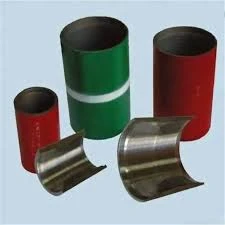- Afrikaans
- Albanian
- Amharic
- Arabic
- Armenian
- Azerbaijani
- Basque
- Belarusian
- Bengali
- Bosnian
- Bulgarian
- Catalan
- Cebuano
- Corsican
- Croatian
- Czech
- Danish
- Dutch
- English
- Esperanto
- Estonian
- Finnish
- French
- Frisian
- Galician
- Georgian
- German
- Greek
- Gujarati
- Haitian Creole
- hausa
- hawaiian
- Hebrew
- Hindi
- Miao
- Hungarian
- Icelandic
- igbo
- Indonesian
- irish
- Italian
- Japanese
- Javanese
- Kannada
- kazakh
- Khmer
- Rwandese
- Korean
- Kurdish
- Kyrgyz
- Lao
- Latin
- Latvian
- Lithuanian
- Luxembourgish
- Macedonian
- Malgashi
- Malay
- Malayalam
- Maltese
- Maori
- Marathi
- Mongolian
- Myanmar
- Nepali
- Norwegian
- Norwegian
- Occitan
- Pashto
- Persian
- Polish
- Portuguese
- Punjabi
- Romanian
- Russian
- Samoan
- Scottish Gaelic
- Serbian
- Sesotho
- Shona
- Sindhi
- Sinhala
- Slovak
- Slovenian
- Somali
- Spanish
- Sundanese
- Swahili
- Swedish
- Tagalog
- Tajik
- Tamil
- Tatar
- Telugu
- Thai
- Turkish
- Turkmen
- Ukrainian
- Urdu
- Uighur
- Uzbek
- Vietnamese
- Welsh
- Bantu
- Yiddish
- Yoruba
- Zulu
casing and tubing connections
Understanding Casing and Tubing Connections in Oil and Gas Operations
Casing and tubing are critical components in the drilling and production phases of oil and gas operations. Their effectiveness largely hinges on the integrity of the connections between these pipes, which are designed to withstand extreme environmental conditions, including high pressure and temperature. Understanding the various types of casing and tubing connections is essential for optimizing performance and ensuring safety in drilling operations.
Casing refers to the large-diameter pipes that are installed in a drilled well to stabilize the wellbore and prevent the inflow of formation fluids. The process involves multiple layers of casing installed at varying depths, each serving to protect the wellbore from collapsing and to isolate different pressure zones. Connections between casing joints are typically made using threaded or welded methods, which must be carefully crafted to maintain a seal that can withstand the forces encountered during drilling and production.
On the other hand, tubing is the smaller diameter pipe used to transport oil and gas from the well to the surface. Tubing connections also use threaded or welded joints, with threading being the most common method due to ease of assembly and disassembly. Given the rigorous demands placed upon these connections—from pressure fluctuations to the corrosive nature of the hydrocarbons—ensuring a secure fit is paramount.
casing and tubing connections

Among the various connection types, the most widely used is the API (American Petroleum Institute) connection, noted for its standardized dimensions and wide acceptance in the industry. However, newer technologies have emerged, such as premium connections that offer enhanced performance in challenging environments. These connections often feature advanced metallurgy and specialized threading designs to improve fatigue resistance and seal integrity.
In addition to the mechanical properties, it is important to consider the maintenance and inspection of these connections to prevent failures that can lead to costly downtime or, worse, environmental hazards. Regular inspections using techniques such as ultrasonic testing or visual inspections can help identify wear or damage before they become critical.
Ultimately, the choice of casing and tubing connections can significantly impact the efficiency and safety of oil and gas operations. Advances in materials and connection designs continue to evolve, providing operators with options that promote greater reliability and performance in increasingly demanding applications. As the industry progresses, understanding and optimizing these connections will remain a vital aspect of successful drilling and production strategies.
-
Tubing Pup Joints: Essential Components for Oil and Gas OperationsNewsJul.10,2025
-
Pup Joints: Essential Components for Reliable Drilling OperationsNewsJul.10,2025
-
Pipe Couplings: Connecting Your World EfficientlyNewsJul.10,2025
-
Mastering Oilfield Operations with Quality Tubing and CasingNewsJul.10,2025
-
High-Quality Casing Couplings for Every NeedNewsJul.10,2025
-
Boost Your Drilling Efficiency with Premium Crossover Tools & Seating NipplesNewsJul.10,2025







